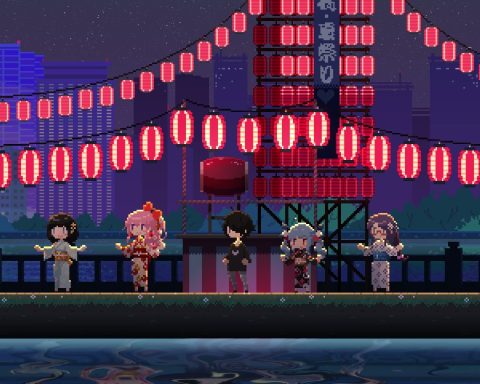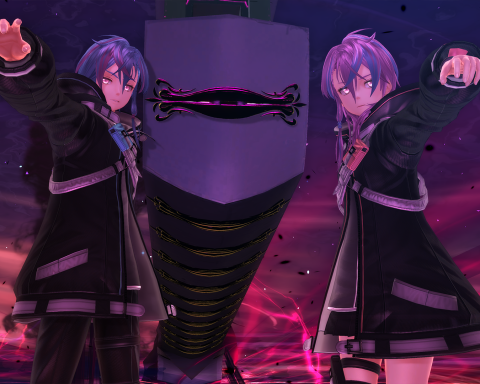 Review by Jedediah H.
Review by Jedediah H.
Resident Evil, the original PlayStation 1 classic, is responsible for moulding me into the bravest of precociously chiselled boys. A frail representation of awkward 1996 childhood, I had no clue as to what I was screaming myself into when I, with my best friend and his mother, picked up a copy of the game from our local Blockbuster Video.
I also didn’t know that upon defeating the final boss and soaring off to what must’ve been the most incredulous post-credits debriefing in Raccoon City’s history that I’d grow a foot taller, gain 35 lbs. of beach muscle, and approach every terrifying situation, including arachnid confrontations, by gesturing at my hypertrophic triceps and shouting “You see these massive lock picks? I am the master of unlocking!”
 |
| I guess you need to have played the original to appreciate that joke… |
So, okay, RE didn’t transmogrify me into a Grade School Adonis, but it did supply an environment wherein working around limitations (finite ammo, resources, and inventory space) to problem solve was enthralling and irresistible, which is a freaking miracle when you consider that my childhood reaction to the terms “homework” and “problem solving” was faking a coma behind my teacher’s strawberry-scented bookshelf.
Six years and innumerable virtual adventures later, Capcom achieved the phenomenal with its Gamecube remake: here was a superior, rebuilt version of the masterpiece that managed to preserve and present a trip through Spencer Mansion to my arrogant older self in the same way my timid childhood nostalgia had remembered it – the elaborate mansion was dreadful, the puzzles were a joy/ pain to solve, the infected and cultured freaks were even more unforgiving, and my magic trousers were in even more danger of being riddled in fear reflex. It was as though the undead experience I had bragged about six years prior was impervious to decay.
 |
| New costumes and game-modes upon completion make Jill impervious to flattery. |
Here I am now, lips chapped from muzzling my baby-in-a-basket screams, paradoxically exhausted and invigorated from scrounging what artillery and health supplements I could in the PlayStation 4 HD remaster of the 2002 Gamecube remake. And I have to be honest with your inquisitive, charming faces (please don’t give me that look) – I don’t want be here, in this article, at this moment; I want to be preparing for my second tour as Chris “Boulder-to-hips-ratio” Redfield, in a horror escapade that’s just as exciting and, to a boyish dude with old-school RE history, as relevant today as it was thirteen years ago.
The iconic set-up: Peculiar, seemingly cannibalistic homicides have been reported on the outskirts of Raccoon City. S.T.A.R.S. (Special Tactics and Rescue Service), divided into two teams, is dispatched to comb the forest and investigate the cause of these strange murders. But the first team that’s sent in loses contact with headquarters. So, Alpha Team, which consists of the unruffled Chris Redfield and the adroit Jill Valentine, is sent in to stylishly reclaim its missing compatriots. But that’s when…
 |
| Puppies! |
…gamma dogs (as my friend and I called them when we were kids) launch a surprise mauling on a number of Alpha’s members, forcing the survivors to shelter themselves in the nearest safe haven, the Spencer Mansion. Of course, each survivor insists on searching the mansion on her and his own, and this is where the magic materialises. When you, as Jill, walk in on your first zombie that’s bent down, romancing your friend Kenneth with its teeth, and when you say “Screw that” and turn to flee through the nearest doorway, two things may stick out: the awesome visuals and reworked controls.
The lighting, the shadows, the zombies shuffling for your jugular: everything looks splendidly heroic and threatening in wide-screen high definition (you have the option of switching between 16:9 and 4:3 aspect ratios at any time). The detailed pre-rendered backgrounds coupled with fixed camera angles and screen pivoting produce constant mystery and caution by minimizing your perspective. The sound of footsteps or an unsteady rap on a bathroom door becomes thigh-clenching tension as your imagination attempts to position the creature’s location within the dim hallway you’re travelling.
 |
| Leave it to me to laugh at Chris’ terror-anxiety. |
This inability to manipulate the camera may seem like it has the potential to be frustrating, but with the ability to auto aim, Jill points her weapon directly at her attacker, as long as it’s within her line-of-sight, allowing you to determine its position when it’s off screen. A few problems with these backgrounds, however, are that, in certain locations more than others, your character model can contrast greatly with its surroundings, and said model’s limbs can clip through walls and objects when you creep a bit too close to their surfaces. But unless you’re a graphical perfectionist, these blemishes won’t negatively influence your immersion.
Concerning the controls, do you like for your on-screen avatar to move in the direction you tilt your analogue stick, or do you prefer her to pivot on an axis and to only move forward in the direction she’s facing, like a Challenger 2 battle tank? I ask because whether you prefer the freedom of 360 degree movement or the steadiness of tank controls, you can choose either at will. I found both dependable in different situations: during exploration, I was all about the analogue freedom; when a zombie was shambling for its first taste of a female bad-ass, tank controls were preferable so as to slowly back up to keep Jill out of grabbing distance as she kept her handgun pointed and firing at its greasy chest hair.
 |
| “I can see it… through his… shirt…” |
With the default controls, free movement is set to analogue while tank controls are mapped to the d-pad, so alternating between control schemes is nearly seamless. But an issue can arise when you mix free analogue controls, fixed camera angles, and a crimson flesh eater howling for you at the end of the hall. I call it “operational confusion”: when you’re running to preserve your flesh and the camera perspective abruptly shifts – whoops! – you flick the stick to match Jill’s new direction and momentum and are now running at the beast. It takes some practice, but the trick is to, after the camera changes positions, continue holding the analogue stick in the same direction as it was prior to the camera shift. See, this is why tank controls were implemented in the first place.
Now that we’re barrelling, battle-biceps exposed, into the conclusion of this critique/ nostalgia trip, I feel I must briefly attempt to convince you that a remaster of a remake of a nearly two decade old PS1 game is relevant by today’s bustling gaming standards. To summarise it simply, it’s about how RE’s limitations add measurable impact to your choices. It’s about the exploration and puzzle solving sans omnipresent hand-holding. These concepts are rare attributes in today’s AAA gaming scene. And when laced with enhanced visuals and a friendlier control scheme, RE HD Remaster becomes a precious survival experience for the nostalgic and a necessary one for the newcomer.
– Jedediah H.
News Editor
I barrel into obscurity on Twitter
Chris’ shoulder-to-hip ratio intimidates the undead on Twitch







